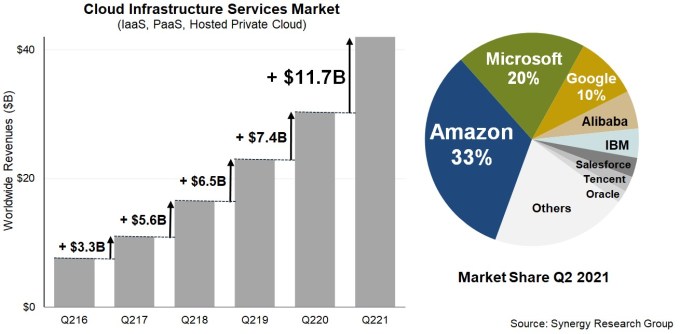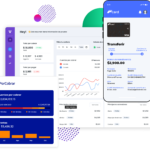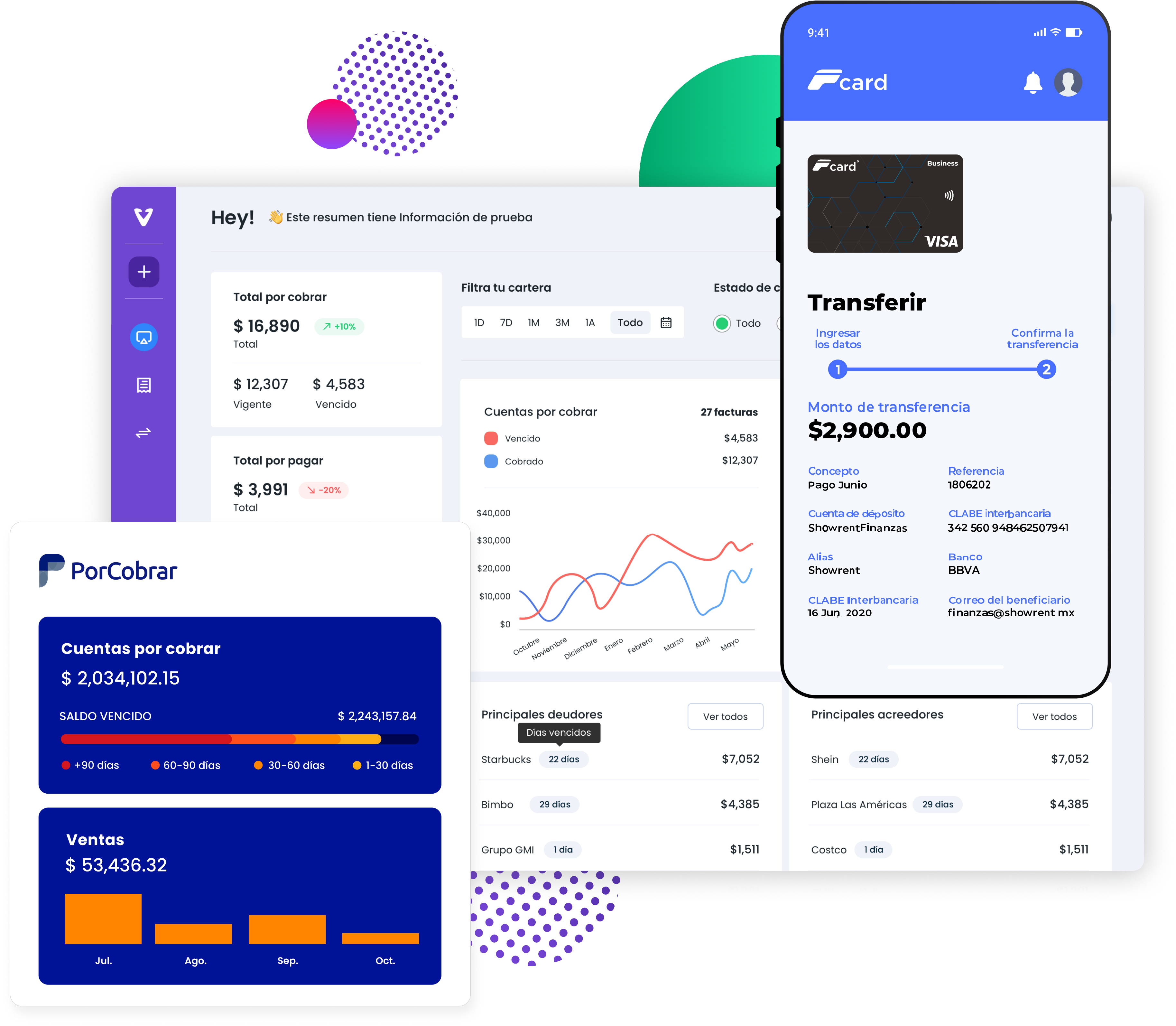Welcome back to This Week in Apps, the weekly TechCrunch series that recaps the latest in mobile OS news, mobile applications and the overall app economy.
The app industry continues to grow, with a record 218 billion downloads and $143 billion in global consumer spend in 2020. Consumers last year also spent 3.5 trillion minutes using apps on Android devices alone. And in the U.S., app usage surged ahead of the time spent watching live TV. Currently, the average American watches 3.7 hours of live TV per day, but now spends four hours per day on their mobile devices.
Apps aren’t just a way to pass idle hours — they’re also a big business. In 2019, mobile-first companies had a combined $544 billion valuation, 6.5x higher than those without a mobile focus. In 2020, investors poured $73 billion in capital into mobile companies — a figure that’s up 27% year over year.
This Week in Apps will finally be a newsletter! It will launch on August 7. Sign up now!
Top Stories
Google Play updates its policies
Did you hear the one about Google Play banning sugar daddy dating apps? Google this week updated its terms to clarify that apps where users offer sex acts in exchange for money, or “sugar dating,” as the new terms state, are no longer allowed as of September 1, 2021.
More interesting, perhaps, to the larger group of legitimate Android developers is this week’s unveiling of the UI for the upcoming Google Play safety section and the accompanying app labels. The labels will function as the Android counterpart to the app “nutrition labels” the Apple App Store recently introduced. Google is giving developers plenty of time to get used to the idea of increased transparency and disclosure, by offering a detailed timeline of when it expects developers to have their privacy label submissions ready. By April 2022, all developers will need to declare specific info and have a privacy policy.
Developers will have to disclose to users whether their app uses security practices like data encryption, whether it follows Google Play’s Families policy for apps aimed at kids, whether users have a choice in data sharing, whether the app’s safety section had been verified by a third party, and if the app allowed users to request data deletion at the time of uninstalling, among other things.
Apps that don’t disclose won’t be able to list or update until the problems are fixed.
The safety section wasn’t the only Google Play policy news to be announced this week.
Google also reminded developers that it was making a technical change to how advertising IDs work. Now, when users opt out of interest-based advertising or ads personalization, their advertising ID is removed and replaced with a string of zeros. The change, however, is a phased rollout, affecting apps running on Android 12 devices starting late 2021 and expanding to all apps running on devices that support Google Play in early 2022.
Google also said it will test a new feature that notifies developers and ad/analytics service providers of user opt-out preferences and is prohibiting linking persistent device identifiers to personal and sensitive user data or resettable device identifiers. Kids apps will also not be able to transmit an ad ID.
Another policy update includes a plan to close dormant accounts. Google says if the account is inactive or abandoned after a year, it will be closed. This will include accounts where the developer has never uploaded an app or accessed Google Play Console in a year.
Tools to build accessible experiences will also be locked down, as Google is adding new requirements on how AccessibilityService API and IsAccessibilityTool can be used.
Apple tries to fix the Safari mess
In response to feedback and complaints, Apple is clearly trying to fix some of the issues that arose from this change. It re-added a Share button to the tab bar and put additional controls under that menu. There’s also once again a reload button in the tab bar next to the domain name, though it’s a bit smaller, and a Reader Mode button will appear in the tab bar when Reader is available
On iPad, Safari also reverted back to the traditional separate row of tabs, instead of the new compact experience.
Elon Musk sides with Epic Games
Elon Musk sided with Fortnite maker Epic Games in the Apple App Store antitrust lawsuit, as the Tesla CEO tweeted on Friday that Apple’s App Store fees were “a de facto global tax on the Internet.” The lawsuit alleges Apple is abusing its platform power with how it commissions apps and in-app purchases on its App Store platform — fees that add up to big numbers for a game like Fortnite, which arguably doesn’t need an App Store for discovery, marketing, payments and distribution. But there’s no other way to sell to iOS users today. On Android, apps can at least be sideloaded. It’s not currently clear why Musk has decided to take a stand on the issue, as none of his companies’ apps are dramatically impacted by Apple’s fees at present.
Weekly News
Other Platform News (Apple & Google)
Apple announced plans to end support for a number of SiriKit intents and commands, including those that could impact major apps — like ride-sharing app Uber. In total, there are over 20 SiriKit intent domains that will be deprecated and no longer supported in new and existing OS releases, Apple says.
Apple tweaked the controversial iOS 15 Safari changes in the latest betas (iOS 15 and iPadOS 15, beta 4). The new Safari design had moved the tab bar (URL bar) to the bottom of the screen — a fairly radical change for one of the iPhone’s most used apps. It was meant to make the controls easier to reach but critics said that the change made other often used features — like the reload button or Reader Mode — harder to find and use, impacting the overall usability of the browser itself.
Google this week launched version 1.0 of Jetpack Compose, Android’s new, native UI toolkit aimed at helping developers build better apps faster. The tool had been in beta since March. The new production release is built to integrate with the Jetpack libraries developers already use, and offers an implementation of Material Design components and theming. New features include Compose Preview and Deploy Preview, which require Android Studio Arctic Fox, which is also out now in a stable release.
Google also announced the availability of the CarHardwareManager API via the Android for Cars App Library as part of Jetpack.
E-commerce
Twitter launched a U.S. e-commerce pilot test that will help determine the current appetite for online shopping on its platform. The test allows brands and businesses to feature a “Shop Module” with various products for sale at the top of their Professional Profile, a business-friendly version of a profile page with support for things like an address, hours, phone number and more. Users can click on the Shop Module to go to a retail website and transact. Early testers include Game Stop and Arden Cove. The feature itself is somewhat bare bones for now, as it’s really just an image that launches an in-app browser. That’s not enough to really compete with something like Instagram Shop or Shopify’s Shop and the integrated, native checkout experience those types of app offers.
Fintech
Fintech giant Robinhood raised $2.1 billion in its IPO this week. The IPO valued the trading app at $31.8 billion, making it larger that traditional rivals like Charles Schwab, even though the offering priced at the bottom of its range. The stock dropped 8% during its first day’s trading, however. Robinhood now has 21.3 million MAUs.
PayPal during its second-quarter earnings call announced its new “super app” is now code-complete and ready to roll out. The app will feature early direct deposit, check cashing, high yield savings, budgeting tools, improved bill pay, crypto support, subscription management, buy now, pay later functionality, mobile commerce, and person-to-person messaging features. The latter hadn’t yet been announced and would allow users to chat outside of the payments process.
Code found in Apple’s Wallet app indicates that iOS 15 will require users to verify their identities by taking a selfie when they add their driver’s license or other state identification card to the iPhone.
Social
Instagram announced a series of significant changes to how it handles the accounts of younger teens. The company says it will now default users to private accounts at sign-up if they’re under the age of 16 — or under 18 in certain locales, including in the EU. It will also push existing users under 16 to switch their account to private if they have not already done so. In addition, Instagram is rolling out new technology aimed at reducing unwanted contact from adults — like those who have already been blocked or reported by other teens — and it will change how advertisers can reach its teenage audience. The changes give the company a way to argue to regulators that it’s capable of self-policing as it attempts to roll out a version of Instagram to younger users under the age of 13.
Twitter rolls out an update to its live audio platform, Twitter Spaces, that will make it easier to share the audio room with others. Users will be able to compose a tweet right from the Space that links to the room and includes any accompanying hashtags. iOS users also received new guest management controls for hosts.
Snapchat resolved an outage that was stopping people from logging in on Thursday. Unlike other app blips, which fix themselves often without users’ awareness, Snap told users to manually update their app if the issues continued.
Snapchat also this week added a “My Places” feature to Snap Map, which allows users to log their favorite spots, share them with friends and find recommendations. The feature supports over 30 million businesses and allows Snap to differentiate its map from a utility like Google Maps or Apple Maps, because it’s about personal recommendations from people you know and trust: your friends.
Instagram added support for 60-second videos to its TikTok clone, Reels. Previously, only Reels of up to 30 seconds were supported. Sixty seconds is in line with other platforms like YouTube Shorts and Snapchat’s Spotlight. But TikTok is now inching into YouTube territory, as it recently expanded to support three-minute videos.
TikTok expanded its LIVE platform with a huge lineup of new features including the ability to go live with others, host Q&As, use moderators and improved keyword filters, and more. For viewers, TikTok is adding new discovery and viewing tools, including picture-in-picture mode and ways to jump to LIVE streams from the For You and Following feeds. Some markets, including the U.S. already had access to LIVE Events, but the feature is now expanding. Meanwhile, the co-host feature currently supports going live with one other creator, but TikTok says it’s now testing multiple hosts.
Discord launched a new feature, Threads, which will make it easier to read through longer conversations on busy servers. Now, any server with “Community” features enabled will be able to transform their messages into threaded conversations across mobile and desktop. The threads will be designated by their own subject name and can be created by selecting a new hashtag symbol that appears in the menu when hovering over messages or by pressing the + sign in the chat bar.
Pinterest shares dropped by more than 12% after the company reported its second-quarter earnings on Thursday. Despite beating on estimates with revenue of $613.2 million and earnings per share of 25 cents, investors were disappointed by the miss on user growth. The company reported monthly active user growth of just 9% to reach 454 million, when analysts were expecting 482 million. Pinterest blamed COVID impacts for the slowdown. The news follows Pinterest’s launch of new tools for creators to monetize their content, with Ideas Pins — the recently launched video-first format that lets creators show off their work. Now, creators can make their pins “shoppable” and take commissions on those purchases.
Messaging
WhatsApp is testing support for higher image upload quality on iOS devices. The feature was discovered on WhatsApp’s TestFlight version for iOS but is not yet public and offers three options: auto, best quality or data saver.
Streaming & Entertainment
Spotify’s Clubhouse clone, Greenroom, is off to a slow start. The app has only been downloaded 140,000+ times on iOS and 100,000+ on Android, including installs from its earlier life as Locker Room, an app that Spotify acquired to move into live audio. Meanwhile, Spotify has 365 million monthly active users on its flagship streaming app.
Spotify also reported its Q2 earnings this week, where it posted a $23.6 million loss and failed to reach its forecast for total MAUs, despite growing MAUs 22% YOY to 365 million. It now has 165 million paying subscribers, which is up 20% YOY.
In a change to its app, Spotify added an attention-grabbing “What’s New” feed that offers personalized updates about new releases and new podcast episodes. The feature is available through a notification bell icon and uses a blue dot to indicate when there’s something new to see. Dots like this are a psychological hacks popularized by social apps like Facebook and Instagram to addict users, which could impact user engagement time on Spotify’s app.
Apple’s GarageBand app for iOS and iPadOS now lets you remix tracks from top artists and producers like Dua Lipa and Lady Gaga. There are also new Producer Packs with beats, loops and instruments created for GarageBand by top producers, including Boys Noize, Mark Lettieri, Oak Felder, Soulection, Take A Daytrip, Tom Misch and TRAKGIRL.
Google TV’s mobile app was updated with new services and personalized recommendations, following last fall’s launch of the Google TV user experience for Chromecast devices. The app now sports 16:9 widescreen movie and show posters, and added new providers Discovery+, Viki, Cartoon Network, PBS Kids, Boomerang, plus on-demand content from live TV services, including YouTube TV, Philo and fuboTV.
Gaming
Epic Games announced that Fortnite will host another in-game event it’s calling the “Rift Tour,” which kicks off Friday, August 6 and runs through Sunday, August 8. What it hasn’t yet said is what the Rift Tour is, beyond a “musical journey into magical new realities” that will feature a “record-breaking superstar.”
Health & Fitness
Facebook’s Oculus division is exploring an integration of Oculus Workouts with Apple’s Health app, according to the app’s code. An integration would allow users to store their workout data in Health.
Productivity
Usage of mobile video conferencing apps like Zoom grew by 150% in the first half of 2021, according to a report from Sensor Tower. Zoom, Microsoft Teams and Google Meet saw a surge in usage, collectively climbing to nearly 21x higher than in H1 2019, the firm found.
Google Voice’s app was updated with a few refinements, including a way to see the reason for a missed call or dropped call, and an easy way to redial. iOS users can now show their Google Voice number as their caller ID when they get a calling through a forwarding number. Another change will allow users to delete multiple SMS messages at once.
Edtech
Language learning app Duolingo raised $521 million in its U.S. IPO, priced above the marketed range. The company priced 5.1 million shared at $102, after first marketing them at $95 to $100.
Utilities
Amazon this week rolled out an update to its Alexa iOS app that allows users to add an Alexa widget to their iOS homescreen. The widget lets you tap on a button to speak to the virtual assistant and issue commands. Watch out Siri! (Ha, just kidding.)
Google Maps also updated its iOS app this week to add support for a homescreen widget. There are two different widgets sizes to choose from — one that gives info like weather and traffic, while another is more of a shortcut to nearby places like gas stations, restaurants, work and home.
Google is working on a”Switch to Android” app for iOS users that will copy over data and apps from an iPhone to bring them to a new Android device. Apple already offers a similar app, called “Move to iOS” for Android users.
Transportation
Parking app usage has popped to pre-pandemic levels, Apptopia reported. Apps in this space help users find availability in lots and garages nearby and facilitate payments. Browsing time in apps was up 57% YOY in July, and overall parking app usage is now 6.2% above Jan. 2020 pre-pandemic levels.
Moovit integrated Lime’s electric scooters, bikes and mopeds into its transit-planning app that’s live in 117 cities across 20 countries and continents, including the United States, South America, Australia and Europe.
Government & Policy
Tencent’s WeChat suspended new user registrations in China to comply with “relevant laws and regulations.” The move comes amid a broad crackdown on tech companies by Chinese regulators, related to data collection and other harmful practices.
Recently, China ordered Tencent and 13 other developers to fix problems related to pop-ups inside their apps, as part of the tech crackdown. The regulator also said it would tighten controls on misleading and explicit content used for marketing, and issued fines for offensive content to Tencent, Kuaishou and Alibaba.
Security & Privacy
Apple released patches for iOS, iPadOS and macOS to address a zero-day vulnerability that had been exploited in the wild. Apple said the exploit could exploit the vulnerability known as CVE-2021-30807 to execute arbitrary code with kernel privileges on a vulnerable and unpatched device.
Google Play Protect failed an Android security test, according to a report from Bleeping Computer. The mobile threat protection solution ranked last out of 15 Android security apps tested over a span of six months, between January to June 2021.
Funding and M&A
 Product insights and analytics startup Pendo raised $150 million at a $2.6 billion valuation, ahead of its expected IPO. The round was led by B Capital, the firm from Facebook co-founder Eduardo Saverin, and included new investor Silver Lake Waterman, alongside existing backers. Pendo’s platform helps companies gather data on how customers use their apps, including clients like Okta, Toast and others.
Product insights and analytics startup Pendo raised $150 million at a $2.6 billion valuation, ahead of its expected IPO. The round was led by B Capital, the firm from Facebook co-founder Eduardo Saverin, and included new investor Silver Lake Waterman, alongside existing backers. Pendo’s platform helps companies gather data on how customers use their apps, including clients like Okta, Toast and others.
 Twitter “acqui-hired” the team from subscription news app, Brief, who will now join Twitter’s Experience.org group, which works on Twitter Spaces and Explore. Brief had offered a non-biased news app that allowed you to get both sides of a story and all the necessary facts. Deal terms weren’t disclosed.
Twitter “acqui-hired” the team from subscription news app, Brief, who will now join Twitter’s Experience.org group, which works on Twitter Spaces and Explore. Brief had offered a non-biased news app that allowed you to get both sides of a story and all the necessary facts. Deal terms weren’t disclosed.
 Delivery app Gopuff confirmed its $1 billion fundraise at a $15 billion valuation, aimed at expanding its instant delivery service. TechCrunch previously reported the news when the Series H was still being closed.
Delivery app Gopuff confirmed its $1 billion fundraise at a $15 billion valuation, aimed at expanding its instant delivery service. TechCrunch previously reported the news when the Series H was still being closed.
 Indian travel app Ixigo raised $53 million (Rs 395 crore), prepping the business for a valuation of $750 million-$800 million for its upcoming IPO. The round was led by Singapore sovereign wealth fund GIC.
Indian travel app Ixigo raised $53 million (Rs 395 crore), prepping the business for a valuation of $750 million-$800 million for its upcoming IPO. The round was led by Singapore sovereign wealth fund GIC.
 Mobile-first digital wallet Valora native to the Celo network raised $20 million in Series A funding led by Andreessen Horowitz (a16z), a Celo backer, to become a global gateway to crypto.
Mobile-first digital wallet Valora native to the Celo network raised $20 million in Series A funding led by Andreessen Horowitz (a16z), a Celo backer, to become a global gateway to crypto.
 Crypto wallet company Eco, backed by a16z, raised $60 million in new funding led by Activant Capital and L Catterton. Eco offers a digital wallet with rewards and no fees, and has average deposits of around $6,000.
Crypto wallet company Eco, backed by a16z, raised $60 million in new funding led by Activant Capital and L Catterton. Eco offers a digital wallet with rewards and no fees, and has average deposits of around $6,000.
 Search API startup Algolia, which lets developers integrate real-time search in apps or websites, raised $150 million in Series D funding, valuing the business at $2.25 billion, post-money. The round was led by Lone Pine Capital. Algolia now has over 10,000 customers, including Slack, Stripe, Medium, Zendesk and Lacoste.
Search API startup Algolia, which lets developers integrate real-time search in apps or websites, raised $150 million in Series D funding, valuing the business at $2.25 billion, post-money. The round was led by Lone Pine Capital. Algolia now has over 10,000 customers, including Slack, Stripe, Medium, Zendesk and Lacoste.
 Brain Technologies raised $50+ million for Natural, a natural language search engine and super app for iOS, which wants users to stop switching between apps to order food, groceries or go shopping. Backers include Laurene Powell Jobs’ Emerson Collective, Goodwater Capital, Scott Cook and WTT Investment.
Brain Technologies raised $50+ million for Natural, a natural language search engine and super app for iOS, which wants users to stop switching between apps to order food, groceries or go shopping. Backers include Laurene Powell Jobs’ Emerson Collective, Goodwater Capital, Scott Cook and WTT Investment.
 Messaging app Element, built on the decentralized Matrix protocol, raised $30 million in a Series B round of funding. Investors include open-source R&D lab Protocol Labs and Metaplanet. a fund from Skype co-founder Jaan Tallinn, as well as past investors Automattic and Notion.
Messaging app Element, built on the decentralized Matrix protocol, raised $30 million in a Series B round of funding. Investors include open-source R&D lab Protocol Labs and Metaplanet. a fund from Skype co-founder Jaan Tallinn, as well as past investors Automattic and Notion.
 Indonesia-based grocery app HappyFresh raised $65 million in Series D funding in a round led by Naver Financial Corporation and Gafina B.V. The app offers an Instacart-like grocery delivery service for parts of Asia, which today operates in Indonesia, Malaysia and Thailand.
Indonesia-based grocery app HappyFresh raised $65 million in Series D funding in a round led by Naver Financial Corporation and Gafina B.V. The app offers an Instacart-like grocery delivery service for parts of Asia, which today operates in Indonesia, Malaysia and Thailand.
 Indian D2C beauty brand MyGlamm, which sells products through an app and website, raised $71.3 million in Series C financing, from Amazon, Ascent Capital and Wipro.
Indian D2C beauty brand MyGlamm, which sells products through an app and website, raised $71.3 million in Series C financing, from Amazon, Ascent Capital and Wipro.
Downloads
Nanogram

Image Credits: Nanogram
Developer Kosta Eleftheriou may have taken on Apple in legal battles and on Twitter, as he points out the numerous app scams on the App Store, but that hasn’t stopped him from building new apps.
This week, Eleftheriou introduced Nanogram, a Telegram client app that works on the Apple Watch without needing an iPhone connection. Eleftheriou said he was inspired to build Nanogram because he wanted a Telegram app for his LTE Apple Watch and didn’t like the official version that didn’t provide “basic and reliable messaging functionality.” So he built his own app from scratch using the Telegram SDK, which allows you to send, receive and view all your messages and notifications right from your wrist — even if you don’t have your phone nearby. The app also supports Eleftheriou’s FlickType Swipe Keyboard for faster replies while on the go.
Eleftheriou notes the app doesn’t collect any personal information and requires an Apple Watch Series 3 or later, running watchOS 7 or later.
Lightricks’ Videoleap for Android

Image Credits: Lightricks
After seeing a 70% yearly increase for its iOS version, Lightricks brought its Videoleap app to the Google Play Store. The app has grown popular with online creators for offering professional quality editing tools on mobile, including those that let you apply artistic effects, mix videos with images, add text and layer transformations and more. The company says Videoleap users are now creating 35 million pieces of content per month, and 47% of users are exporting their creations to TikTok in pursuit of monetizing their content further. The app, like others from Lightricks (which also makes FaceTune and others), monetizes by way of in-app subscriptions.
Tweets

Powered by WPeMatico








 Product insights and analytics startup Pendo
Product insights and analytics startup Pendo  Twitter
Twitter 



